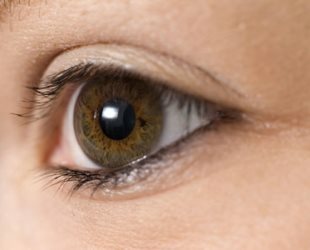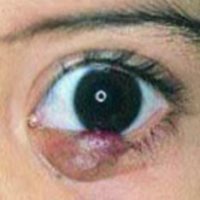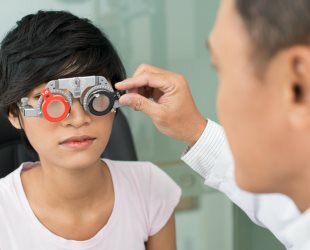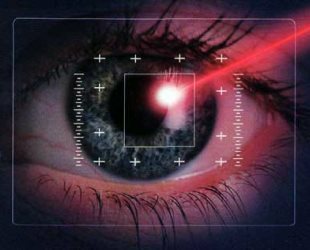
Eye disease caused by their different refraction( refractive power) is called anisometropia. The disease can lead to dangerous consequences: strabismus or amblyopia( loss of vision due to inaction of the eye).
Along with anisometropia, astigmatism may occur( visual impairment associated with a lens, cornea, or eye defect).
Description of the disease
In a person diagnosed with anisometropia, one eye can be normal refraction and the other with an abnormal refraction.
- 1. Description of the disease
- 2. Causes of the disease
- 3. Symptoms of the disease
- 4. Correction of the disease
- 5. Treatment
- 6. Prevention of the disease
- 7. Video:
Sometimes the eyes have the same refraction, but a different decreasevisual acuity. Or in both eyes a different abnormal refraction.
If the difference in refraction between the eyes is small( less than 2 diopters), the disease may not be noticed by a person. But if the difference is significant, there is a probability of loss of binocular vision( vision by both eyes), the object is fixed alternately to the right or left eye, which leads to difficulties in orientation in space and response to external stimuli;the surrounding person perceives indistinctly, blurry, sometimes the images merge.
There are three degrees of development of anisometropia:
- weak degree of anisometropia( within 3 diopters),
- medium degree( range from 3 to 6 diopters),
- strong degree( more than 6 diopters).
The following types of anisometropia are also distinguished according to the type of disease:
- axial anisometropia( when the same axis of each eye is different for the same refraction of the eye),
- refractive anisometropia( with the same axes the refractive powers of the eyes are different),
- mixed anisometropia( when both types of disturbances are present).

Next in our rubric - the symptoms of barley on the eye, learn how to diagnose and properly treat this disease.
What is a front sight? In the news( link) a detailed description of this symptom and what consequences it brings to the patient.
Causes of the disease
Allocate congenital and acquired anisometropia. Congenital or hereditary anisometropia is common. If someone in the family has anisometropia, then probably the development of the disease in younger generations. And at an early age it may not appear in children, but in the future it can lead to serious consequences. In this case, it does not matter which eye sees worse in the adult: the child may suffer more from the opposite side.
Without an inherited predisposition anisometropia may occur in an adult after cataracts or complications of surgical operations on the eyes.
Symptoms of the disease
The main symptomatology of anisometropia is associated with impaired visual acuity. Doctors-oculists for diagnosis of the disease check visual acuity with the help of tables. Also effective for determining visual acuity is the method of photo-scanning the eye.
Correction of the disease
The sooner the correction begins with anisometropia, the higher the chance that vision can be restored. Correction of the disease consists mainly of wearing special corrective lenses or glasses.

There are a lot of contraindications for wearing lenses, therefore each patient should be selected individually by a qualified specialist. Otherwise, we can only increase the negative effects of anisometropia.
When wearing lenses, it is better to constantly see a doctor to prevent damage to the cornea, keratitis, infections, epithelial edema. It is also possible to use night lenses for refractive therapy.
Night lenses are good because during wakefulness a person does not limit himself to anything that is not possible when wearing conventional lenses or glasses.
Night lenses are made of special materials that have gas permeability, so do not cause problems due to lack of oxygen in the cornea. Lenses are able to correct the disease when the difference between eye refraction is more than 2 diopters.
Less telescopic glasses for improving vision are less dangerous, but also less effective. They are a system of lenses - collective and scattering. With their help, images of visible objects on the retina increase, thereby eliminating the problems associated with reduced vision.
Points can correct anisometropia when the difference in eye refraction is not more than 2 diopters. For children, there is a big difference between refraction of the eyes, since their visual system is still capable of changing.
Treatment of

In difficult cases, when anisometropia correction does not work, doctors prescribe a surgical procedure to preserve vision. The operation is performed using a laser. They resort to surgical intervention in the most extreme cases, since these operations are very dangerous and some are contraindicated.
An important criterion for prescribing or refusing surgery is the presence of corneal diseases. If any disease is present, the operation can not be carried out.
After the operation, it is necessary to follow all the doctor's recommendations: you will have to avoid strong physical exertion and tremors, otherwise vision may fall.
Prevention of
As the main cause of anisometropia is associated with heredity, it is rather difficult to prevent its occurrence. Concerned about increased eye pressure? Look here - the treatment of eye pressure here, about the causes, treatment and prevention of this disease.
Here is the treatment of red eyes.
Treatment of eye keratitis!http: //moezrenie.com/bolezni/ zabolevaniya-rogovitsy / keratit-glaza.html
But some precautions should be followed, especially if someone in your family has already experienced such a disease:
- Do not strain your eyes unnecessarily. If there is a possibility to walk instead of playing at the computer, it is better to choose the first one. If your work is related to working at a computer, you should observe the working and resting modes for the eyes. Every hour it is desirable to be distracted from the monitor and to go out into the fresh air.
- Do gymnastics for the eyes and eyelids. A small warm-up for eyesight or a light massage of the eyelids will help to maintain clarity of vision and will avoid fatigue of the eyes by evening.
- Contact sports( rugby, basketball, martial arts) and strength training( bodybuilding, weightlifting) should be avoided.
- It is necessary to adhere to a diet with restriction of fats, and also not to eat food with a high content of cholesterol. Useful products for vision( rich in vitamin E and beta-carotene), on the contrary, should be included in the diet in large quantities.
Video:
Interesting video about the structure of the eye.
